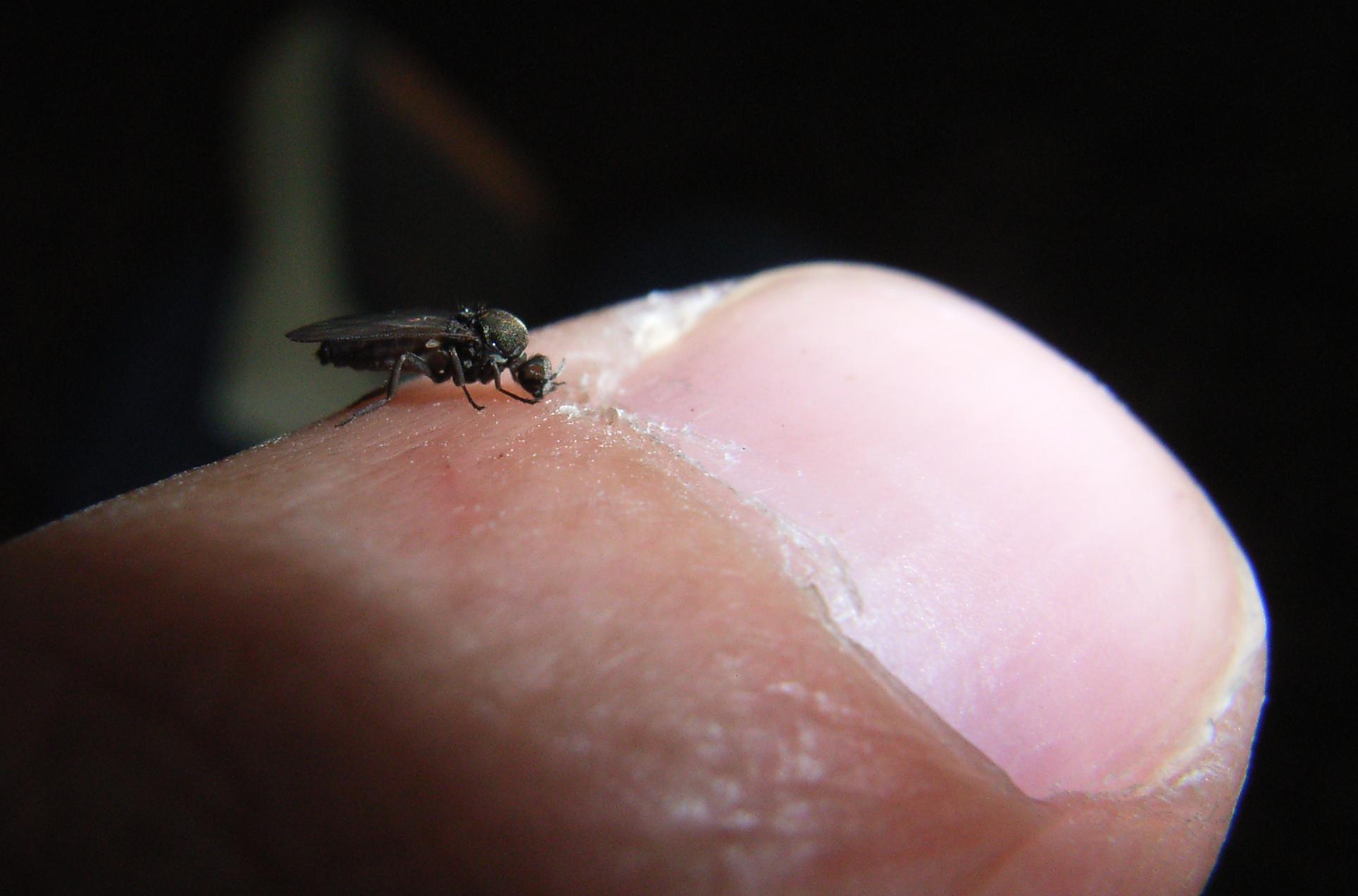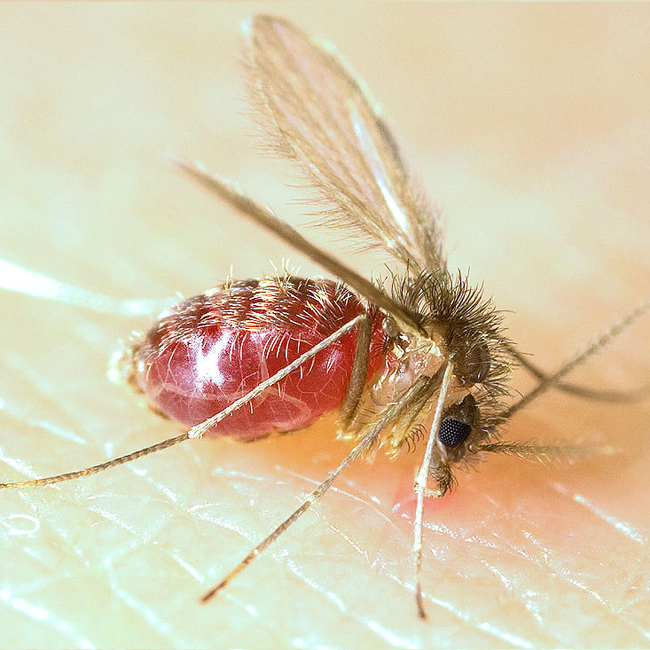|
Sandfly
Sandfly (or sand fly) is a colloquial name for any species or genus of flying, biting, blood-sucking dipteran (fly) encountered in sandy areas. In the United States, ''sandfly'' may refer to certain horse flies that are also known as "greenheads" (family Tabanidae), or to members of the family Ceratopogonidae. The bites usually result in a small, intensely itchy bump or welt, the strength of which intensifies over a period of 5-7 days before dissipating. Moderate relief is achieved with varying success through the application of over the counter products such as Benadryl (ingested) or an analgesic cream such as After Bite (applied topically). Outside the United States, ''sandfly'' may refer to members of the subfamily Phlebotominae within the Psychodidae. Biting midges (Ceratopogonidae) are sometimes called sandflies or no-see-ums (no-see-em, noseeum). New Zealand sandflies are in the genus ''Austrosimulium'', a type of black fly. In the various sorts of sandfly only the fema ... [...More Info...] [...Related Items...] OR: [Wikipedia] [Google] [Baidu] |
Pappataci Fever
Pappataci fever (also known as Phlebotomus fever and, somewhat confusingly, sandfly fever and three-day fever) is a vector-borne febrile arboviral infection caused by three serotypes of Phlebovirus. It occurs in subtropical regions of the Eastern Hemisphere. The name, pappataci fever, comes from the Italian word for sandfly; it is the union of the words ''pappa'' (usually this is used as a generic name for food, but in this case it is a ''verb'' meaning "eating") and ''taci'' (silent), distinguishing these insects from blood-feeding mosquitoes, which produce a typical noise while flying. Signs and symptoms A few days after the infective bite, a feeling of lassitude, abdominal distress and chills develop followed by fever of , severe frontal headaches, muscle and joint aches, flushing of the face and a fast heart rate. After two days the fever begins to subside and the temperature returns to normal. Fatigue, a slow heart rate and low blood pressure may persist from a few days to se ... [...More Info...] [...Related Items...] OR: [Wikipedia] [Google] [Baidu] |
Leishmaniasis
Leishmaniasis is a wide array of clinical manifestations caused by parasites of the trypanosome genus ''Leishmania''. It is generally spread through the bite of phlebotomine sandflies, ''Phlebotomus'' and ''Lutzomyia'', and occurs most frequently in the tropics and sub-tropics of Africa, Asia, the Americas, and southern Europe. The disease can present in three main ways: cutaneous, mucocutaneous, or visceral. The cutaneous form presents with skin ulcers, while the mucocutaneous form presents with ulcers of the skin, mouth, and nose. The visceral form starts with skin ulcers and later presents with fever, low red blood cell count, and enlarged spleen and liver. Infections in humans are caused by more than 20 species of ''Leishmania''. Risk factors include poverty, malnutrition, deforestation, and urbanization. All three types can be diagnosed by seeing the parasites under microscopy. Additionally, visceral disease can be diagnosed by blood tests. Leishmaniasis can be partl ... [...More Info...] [...Related Items...] OR: [Wikipedia] [Google] [Baidu] |
Leishmaniasis
Leishmaniasis is a wide array of clinical manifestations caused by parasites of the trypanosome genus ''Leishmania''. It is generally spread through the bite of phlebotomine sandflies, ''Phlebotomus'' and ''Lutzomyia'', and occurs most frequently in the tropics and sub-tropics of Africa, Asia, the Americas, and southern Europe. The disease can present in three main ways: cutaneous, mucocutaneous, or visceral. The cutaneous form presents with skin ulcers, while the mucocutaneous form presents with ulcers of the skin, mouth, and nose. The visceral form starts with skin ulcers and later presents with fever, low red blood cell count, and enlarged spleen and liver. Infections in humans are caused by more than 20 species of ''Leishmania''. Risk factors include poverty, malnutrition, deforestation, and urbanization. All three types can be diagnosed by seeing the parasites under microscopy. Additionally, visceral disease can be diagnosed by blood tests. Leishmaniasis can be partl ... [...More Info...] [...Related Items...] OR: [Wikipedia] [Google] [Baidu] |
Lutzomyia
''Lutzomyia'' is a genus of phlebotomine sand flies consisting of nearly 400 species, at least 33 of which have medical importance as vectors of human disease. Species of the genus ''Lutzomyia'' are found only in the New World, distributed in southern areas of the Nearctic and throughout the Neotropical realm. ''Lutzomyia'' is one of the two genera of the subfamily Phlebotominae to transmit the Leishmania parasite, with the other being ''Phlebotomus'', found only in the Old World. ''Lutzomyia'' sand flies also serve as vectors for the bacterial Carrion's disease and a number of arboviruses. Evolution The genus, named after Adolfo Lutz, is known from the extinct Burdigalian (20-15 mya) species ''Lutzomyia adiketis'' found as a fossil in Dominican amber on the island of Hispaniola. It is thought that species in the genus ''Lutzomyia'' all originated in the lowland forests to the east of the Andes mountain range, and that their radiation throughout the Neotropics was sparked by ... [...More Info...] [...Related Items...] OR: [Wikipedia] [Google] [Baidu] |
Phlebotominae
The Phlebotominae are a subfamily of the family Psychodidae. In several countries, their common name is sandfly; but that name is also applied to other flies. The Phlebotominae include many genera of blood-feeding (hematophagous) flies, including the primary vectors of leishmaniasis, bartonellosis and pappataci fever. In the New World, leishmaniasis is spread by sand flies in the genus ''Lutzomyia'', which commonly live in caves, where their main hosts are bats. In the Old World, sand flies in the genus ''Phlebotomus'' spread leishmaniasis. Phlebotomine females, and only females, suck blood from various mammals, reptiles and birds. Some species are selective, whereas others bite any suitable host they find. Some species can produce one clutch of eggs before their first blood meal; such females are said to practise autogenous or partly autogenous reproduction. Other species need a blood meal before they can produce any eggs at all; they are said to practise anautogenous reproduct ... [...More Info...] [...Related Items...] OR: [Wikipedia] [Google] [Baidu] |
Chandipura Virus
''Chandipura vesiculovirus'' (CHPV) is a member of the ''Rhabdoviridae'' family that is associated with an encephalitic illness in humans. It was first identified in 1965 after isolation from the blood of two patients from Chandipura village in Maharashtra state, India and has been associated with a number of otherwise unexplained outbreaks of encephalitic illness in central India. The most recent occurred in Andhra Pradesh and Maharashtra in June–August 2003 with 329 children affected and 183 deaths. Further sporadic cases and deaths in children were observed in Gujarat state in 2004. ''Chandipura vesiculovirus'' has been isolated from sandflies in India and West Africa and is probably spread through its bite. The presence of the virus in Africa indicates a wide distribution although no human cases have been observed outside India. The significance of ''Chandipura vesiculovirus'' as a human pathogen is unresolved due to doubts over its role in the 2003 and 2004 outbreaks. _ ... [...More Info...] [...Related Items...] OR: [Wikipedia] [Google] [Baidu] |
Blood-sucking
Hematophagy (sometimes spelled haematophagy or hematophagia) is the practice by certain animals of feeding on blood (from the Greek words αἷμα ' "blood" and φαγεῖν ' "to eat"). Since blood is a fluid tissue rich in nutritious proteins and lipids that can be taken without great effort, hematophagy is a preferred form of feeding for many small animals, such as worms and arthropods. Some intestinal nematodes, such as Ancylostomatids, feed on blood extracted from the capillaries of the gut, and about 75 percent of all species of leeches (e.g., ''Hirudo medicinalis'') are hematophagous. The spider Evarcha culicivora feeds indirectly on vertebrate blood by specializing on blood-filled female mosquitoes as their preferred prey. Some fish, such as lampreys and candirus, and mammals, especially the vampire bats, and birds, such as the vampire finches, hood mockingbirds, the Tristan thrush, and oxpeckers also practise hematophagy. Mechanism and evolution These hemat ... [...More Info...] [...Related Items...] OR: [Wikipedia] [Google] [Baidu] |
Phlebotomus
''Phlebotomus'' is a genus of " sand flies" in the Diptera family Psychodidae. In the past, they have sometimes been considered to belong in a separate family, Phlebotomidae, but this alternative classification has not gained wide acceptance. Epidemiology In the Old World, ''Phlebotomus'' sand flies are primarily responsible for the transmission of leishmaniasis, an important parasitic disease, while transmission in the New World, is generally via sand flies of the genus ''Lutzomyia''. The protozoan parasite itself is a species of the genus ''Leishmania''. Leishmaniasis normally finds a mammalian reservoir in rodents and other small animals such as canids ( canine leishmaniasis) and hyraxes. The female sand fly carries the ''Leishmania'' protozoa from infected animals after feeding, thus transmitting the disease, while the male feeds on plant nectar. The parasite ''Leishmania donovani'' is the main causative agent of visceral leishmaniasis (VL) in India, Nepal, and Bangladesh ... [...More Info...] [...Related Items...] OR: [Wikipedia] [Google] [Baidu] |
Austrosimulium
''Austrosimulium'' is a genus of 31 species of black flies that are distributed in Australia and New Zealand. There are 2 subgenera: ''Austrosimulium'' whose species are principally from New Zealand, and ''Novaustrosimulium'' which are exclusively Australian. ''Austrosimulium'' is a sister genus to the monospecific '' Paraustrosimulium'' of South America. Some species are known to spread the protozoan blood parasite '' Leucocytozoon tawaki'' in penguins. In New Zealand, where they are known as ''sandflies'' or namu (in Māori from Proto-Austronesian *''ñamuk'' "mosquito", compare with ms, nyamuk), three species – '' A. australense'', '' A. tillyardianum'' and '' A. ungulatum'' – bite humans. Species *Subgenus ''Austrosimulium'' Tonnoir, 1925 **'' A. albovelatum'' Dumbleton, 1973 **'' A. alveolatum'' Dumbleton, 1973Craig, D.A.; Craig, R.E.G.; Crosby, T.K. 2012Simuliidae (Insecta: Diptera).''Fauna of New Zealand'', (68) **'' A. australense'' ( Schiner, 1868) **'' A. bicorne' ... [...More Info...] [...Related Items...] OR: [Wikipedia] [Google] [Baidu] |
India
India, officially the Republic of India (Hindi: ), is a country in South Asia. It is the seventh-largest country by area, the second-most populous country, and the most populous democracy in the world. Bounded by the Indian Ocean on the south, the Arabian Sea on the southwest, and the Bay of Bengal on the southeast, it shares land borders with Pakistan to the west; China, Nepal, and Bhutan to the north; and Bangladesh and Myanmar to the east. In the Indian Ocean, India is in the vicinity of Sri Lanka and the Maldives; its Andaman and Nicobar Islands share a maritime border with Thailand, Myanmar, and Indonesia. Modern humans arrived on the Indian subcontinent from Africa no later than 55,000 years ago., "Y-Chromosome and Mt-DNA data support the colonization of South Asia by modern humans originating in Africa. ... Coalescence dates for most non-European populations average to between 73–55 ka.", "Modern human beings—''Homo sapiens''—originated in Africa. Then, int ... [...More Info...] [...Related Items...] OR: [Wikipedia] [Google] [Baidu] |
Rabies
Rabies is a viral disease that causes encephalitis in humans and other mammals. Early symptoms can include fever and tingling at the site of exposure. These symptoms are followed by one or more of the following symptoms: nausea, vomiting, violent movements, uncontrolled excitement, fear of water, an inability to move parts of the body, confusion, and loss of consciousness. Once symptoms appear, the result is virtually always death, regardless of treatment. The time period between contracting the disease and the start of symptoms is usually one to three months but can vary from less than one week to more than one year. The time depends on the distance the virus must travel along peripheral nerves to reach the central nervous system. Rabies is caused by lyssaviruses, including the rabies virus and Australian bat lyssavirus. It is spread when an infected animal bites or scratches a human or other animals. Saliva from an infected animal can also transmit rabies if the saliva come ... [...More Info...] [...Related Items...] OR: [Wikipedia] [Google] [Baidu] |





